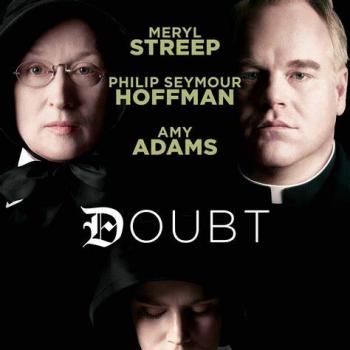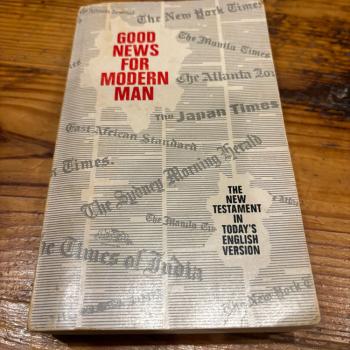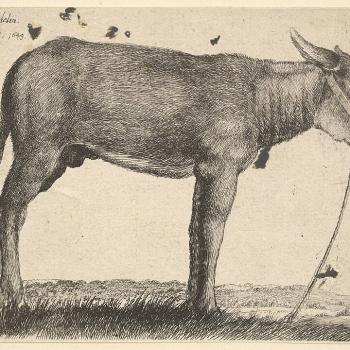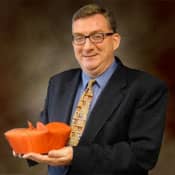There were several African-American-run newspapers circulated in 19th-century America, but none was quite like The American Catholic Tribune, published in the Midwest from 1886 to 1897. Its opening issue declared:
We will do what no other paper published by colored men has dared to do—give the great Catholic Church a hearing and show that it is worthy of at least a fair consideration at the hands of our race, being as it is the only place on this Continent where rich and poor, white and black, must drop prejudice at the threshold and go hand in hand to the altar.
The first newspaper published by and for African-American Catholics, the Tribune was the brainchild of one Daniel Rudd (1854-1933), an ex-slave turned business entrepreneur. A lifelong Catholic, Rudd had a bold vision for both his people and his Church. As journalist and activist, he dreamed of "a new and brighter era in the history of our race," and he saw the Church taking a major role in realizing that dream.
Born in Bardstown, Kentucky, Daniel Arthur Rudd was baptized in St. Joseph's Church, where the Rudds worshipped together with their owners. For three generation, his relatives had been church sextons (caretakers for the facilities). From childhood, Daniel recalled never experiencing segregation in church: "We have been all over St. Joseph Church from foundation stone to pinnacle and no one ever told us to move."
Although slaves weren't allowed to attend school, Rudd's biographer Gary Bruce Agee suggests that a local priest may have tutored Rudd. After the Civil War, he moved to Ohio with his older brother Charles. There he finished high school, a rare achievement in those days for whites or blacks. As a young man he developed his own businesses while he became politically active in civil rights. He started working for a newspaper in 1880.
In 1884, Rudd founded his own paper, The Ohio Tribune. Two years later he renamed it The American Catholic Tribune. Ardently Catholic and politically active, he wanted Black Catholics to be "the leaven," which would raise their people up, "not only in the eye of God but before men." He also hoped to evangelize Black Protestants. While only a small percentage of African-Americans were Catholic, historian Cyprian Davis notes that Rudd hoped for "a massive conversion to Catholicism by American blacks." It never happened.
For Rudd, the basic premise of the U.S. Constitution, that all were created equal, was an idea "Catholic to the core." He truly believed in the Church's Catholicity. But he wasn't naïve about a major obstacle both inside and outside the Church: the "accursed custom of American prejudice." Rudd was challenging both Church and nation to live up to its most cherished ideals and overcome racism.
In the Tribune, Rudd campaigned against growing racial violence and segregation laws, a topic white Catholics usually avoided. But his greatest achievement was organizing the Black Catholic Lay Congress, an unprecedented forum for Black Catholic concerns; it was the first lay congress of any kind in American Catholic history. The congresses met five times between 1889 and 1894, addressing topics relevant to the African American Catholic community.
They addressed question of racism within the Church, vocational training for African American youth, and keeping the young in the Church. And they celebrated the Church's African heritage: "Did not Holy Church canonize Augustine and Monica, Benedict the Moor and Cyprian, Cyril, Perpetua and Felicity?" Finally, they called the fight against racism a moral imperative and called on their own Church to take a leading role therein. One southern delegate pleaded:
Let the Catholic Church, which has always been first in extending a helping hand to the needy, in raising up the humble and rebuking the proud. . .let that Church but take the initiative in this great southern work, in the very heart of the South, and gratitude the strongest characteristic of a down-trodden people will make the people knock at her doors for admission.
Yet few Church leaders denounced the growing racist climate in 1890's America, a period one historian has called "the nadir of African American history." Lynchings increased yearly, and southern states added new segregation laws, which the Supreme Court upheld. Bishops, especially those in the South, backed away from ordaining African-American priests. The congresses (for various reasons, including institutional opposition) ceased to meet.
By the 1890's, Rudd was known as the "leading Catholic representative of the Negro race." In 1897, however, his newspaper folded. He moved back to the South, where he directed his energies toward business enterprises and civil rights. He couldn't have helped but be disappointed by the reaction of his own Church's leaders. But he did remain active in the Church, and joined the NAACP. After suffering a stroke in 1932, he returned to his native Bardstown, where he died a year later.





